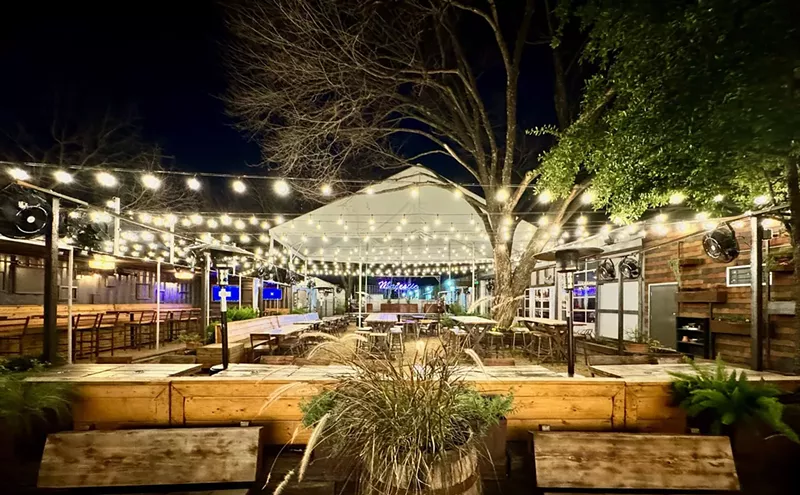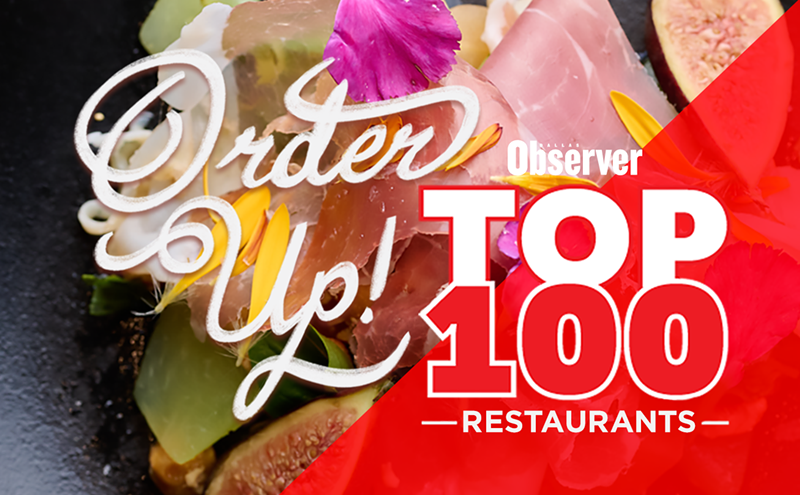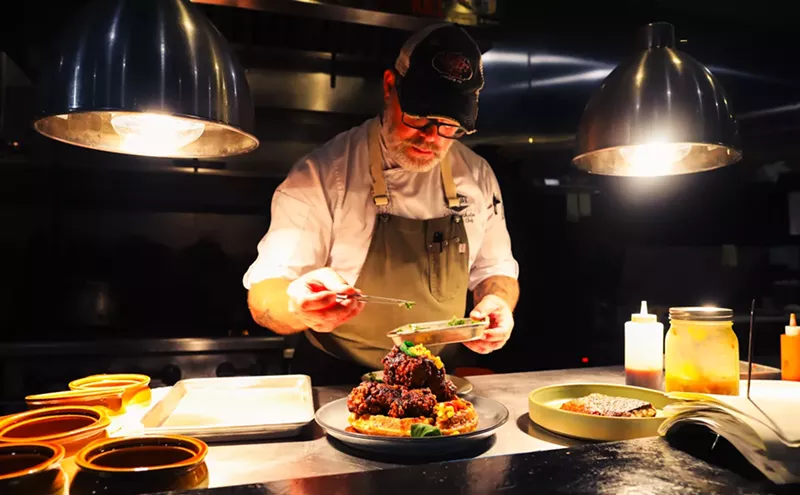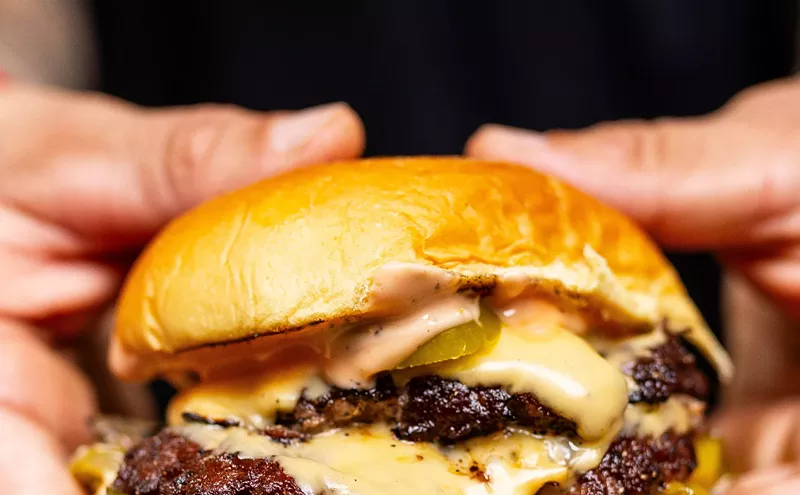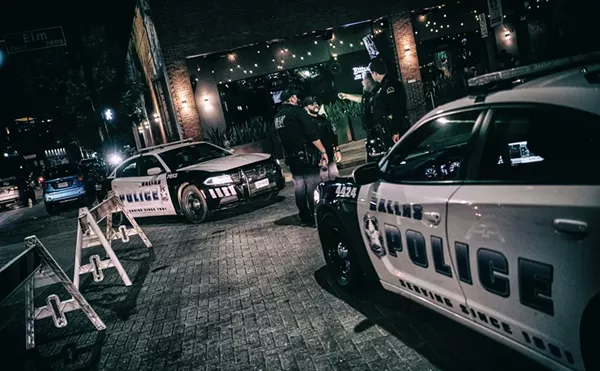But there they were, all of those old cars gussied up in Bill Gates-era modernity. There was a Chevy Nomad: swept, scrunched, and snubbed for the millennium. Chrysler had this late-1940s-ish hot rod truck-from-the-future thing. Mercedes showcased a new gull-wing coupe, conjuring the legendary Benzes of the '50s. From the photos, I surmised the show floor was strewn with the aftermath of unprotected sex between an iMac and a 1950s Frigidaire.
There was even a new Thunderbird, exhumed in all its '50s splendor with a hood scoop, porthole opera windows, and an egg-crate grill. "That's the one," said my wife, excitedly nailing the replacement for her near-decade-old sedan. She was a little deflated when she realized it was only a two-seater. But I reminded her that by the time we were in a position to pick up a new T-Bird, our offspring will be in Rollerblades and could easily skitch off the rear bumper during short family runs. Then on closer inspection, I realized the thing didn't have a rear bumper, at least not the grippable sort.
Car bumpers were big, prevalent, and grippable in 1938, when Lawrence Frank and advertising executive Walter Van de Kamp opened the first Lawry's The Prime Rib on a street in Beverly Hills dominated by vacant lots overgrown with wild mustard. The place boasts a number of restaurant innovations: the first doggie bag; first restaurant valet parking; first to serve salads before the entree; and first to have servers personally identify themselves to guests before they serve ("Hello, my name is Miss Mitzi, and I'll be serving you this evening"). I don't know if I'd take credit for that last groundbreaking service touch.
A company brochure says Frank's idea of opening a restaurant specializing in prime rib was deemed ludicrous by other L.A. restaurateurs at the time. But the brochure points out that the timing for his venue was right: Los Angeles in 1938 was filling with newcomers hungry for novelty. And Lawry's was loaded with it, timeworn though it may be today. I'll be up-front. Prime rib is not one of my favorite cuts of meat. Maybe it's because I've experienced too many assembly-line banquets and scoreless high school dances featuring grand plates of fatty, stringy meat sloshing in jus puddles at places with names like Fountain Blue, Martinique, or Chateau Ritz. Fixings included wilted salad and creamed corn that looked and tasted like it was routed through a Gerber jar. Yet, in the '60s and '70s, prime rib was the Cadillac of cuisine for many. Prime rib signified you'd arrived.
Yet the term prime rib is, in most cases, a misnomer. Meat so dubbed is actually a simple rib roast graded USDA choice. Only some 2.4 percent of all beef is graded prime. Another 62 percent gets the USDA choice grade, within which are three sub-categories designated according to the degrees of fat marbling in the meat: moderate, modest, and small. More than 75 percent of all USDA choice beef falls into the small marbling category.
The Dallas version of Lawry's The Prime Rib serves USDA prime beef--most of the time. Manager Paul Borda says the restaurant also serves certified Angus beef when prime supplies are constrained. Virtually all certified Angus beef is graded USDA choice (a tiny percentage is labeled prime) and falls in the modest category of marbling or higher.
Lawry's meat is very good, as far as prime rib goes, which to my palate isn't very far. But Lawry's is far more than a place to chew and splash a rouge-red slice of beef roast. It's an experience pregnant with subtle theatrics--corny camp, as it were. These touches exude contemporary retro-sheen since the restaurant moved to its brand-new Addison spot off the Tollway on a site that held Addison Square Garden before it was closed and razed. Lawry's vacated its 25-year Maple Avenue location last fall. (Phil Romano is developing a steak and seafood house in Lawry's old space called Samuel's that will feature a caviar bar, cigar lounge, and an open kitchen equipped with a toque-topped pianist playing amidst the food-preparation chaos.)
Minimalist in its carnivorous offerings, Lawry's offers four cuts of prime rib: the English cut (three thin slices totaling 8 ounces}; the traditional Lawry cut (10 ounces); the smaller California cut (6 ounces); and the bone-in "Diamond Jim Brady" cut (14 ounces). The meat is served by white-gloved chefs who push around these sleek, stainless steel roast carts that, with a flame and some wispy smoke out of the butt-end, could easily double as stubby Flash Gordon rockets. Once the cart cover is lifted, the interior lights up, revealing standing rib roasts, plates, and accessories. The Lawry's press kit says that when the first Lawry's opened, each of those carts cost as much as a new Cadillac, a price comparison that still holds true today. Heck, why didn't they just drive those rib roasts around the dining room? Chefs slice cuts from the roast to the degree of doneness requested. The chefs, most wearing sneakers, have these huge gold medals slung around their necks by thick red ribbons. This signifies their membership in the Royal Order of Carvers, an order dreamed up no doubt for marketing purposes. Prime rib dinners come equipped with mashed potatoes (creamy, almost watery), delicately light and crisp Yorkshire pudding (an egg, milk, and flour construction that's like a runt crossbred from a souffle and a popover) for mopping up the meat juices, and whipped cream horseradish plus searingly fresh grated horseradish for touches.
Dinners also include Lawry's "famous" salad, a pedestrian, uninteresting thing constructed with romaine and iceberg lettuce, watercress, thin strips of beet, chopped eggs, and airily delicate croutons. What makes this garden grub famous, though, is how it's prepared. Waitresses dressed in brown dresses and starched white aprons and caps rapidly spin a stainless steel bowl on a bed of crushed ice. While the thing twirls, they toss in salad ingredients and pour in Lawry's "vintage dressing " (a French dressing-type formula, but not as sweet), stretching the stream of goo into long, thin threads by lifting the dressing urns high above their head. The salad is served on a cold plate with a frigidly chilly salad fork.
The selection of a la carte sides is as truncated as the entree offerings: creamed spinach, creamed corn (fat, firm sweet kernels in smooth milky gravy), gargantuan baked potatoes, and good, firm buttered peas. Lawry's also offers fresh fish selections, and you can match any cut with a pair of lobster tails, which proved to be firm and succulently sweet.
Yet perhaps Lawry's most spectacular offering (one retained from Maple Avenue) has little to do with prime rib. It's their ale and sandwich bar (there is a prime rib sandwich) served at lunch in the bar area. The menu is scrawled on a chalkboard, and orders are placed at a carver booth. Sandwiches can be dressed from a small condiment cart that also includes a couple of salads. Pasta salad was so dull and flavorless, papier-máche would be considered potently seasoned in comparison. Potato salad was far better, with moist, firm potato chunks, scallions, and pimento in a tasty dressing.
The warm sandwiches, generous but not so packed with meat that you have to dislocate your jaw to gnaw, are far and away the best of their politely constructed ilk I have tasted. Sliced turkey was juicy with rich, buttery flavor. Corned beef was moist, supple, and tender instead of stiff and dry (I've often wondered if psoriasis was a common corned-beef affliction). Pastrami (like prime rib, not a meat I'm particularly fond of) was so juicy and ripe with expertly balanced smoky richness and texture, I almost tried to lease a Lawry's roast cart in my drunken culinary stupor. Barbecued beef was moist and tender with a sauce understating its sweetness, tang, and spice so as not to trample on the savory meat. Throw in a basket of Lawry's addictive, housemade, skin-on potato chips (it's amazing how often stabs at this junk food taste worse than the stuff disgorged from factories), and it's hard to imagine braying louder with satisfaction over lunch. (Though the absence of sauerkraut on the condiment table was a bit of an annoyance.) Plus, you can easily get away for less than 10 bucks. If this doesn't empty the Tollway high-rises at noon, nothing will.
To season his prime rib, which went for $1.25 when the first restaurant opened, Lawrence Frank developed his own blend of seasonings dubbed Lawry's Seasoned Salt. Patrons swiped the stuff off the tables. So Frank and Van de Kamp decided to bottle and market the salt. (More firsts: Lawry's was the first to market spices in glass jars with removable plastic shaker tops and plastic caps.) From this salt was spawned Lawry's Foods Inc., a company proffering a full line of seasonings and sauces. Lawry's Foods was sold to Lipton in 1979, and the seasoned salt is the world's best-selling blended seasoning (the restaurant licenses the trademark and the name from Lawry's Foods Inc.).
The company has opened only a handful of restaurants along the way. The second Lawry's opened in 1974 in Chicago, with the third taking root in Dallas in 1983. The fourth hit Las Vegas in 1997, and there's also a Lawry's in Jakarta, Indonesia.
There's little difference between the Maple Avenue restaurant and the Addison version aside from additional dining and private dining-room space. It's furnished with the same massive high-backed leather chairs and marked with masculine touches such as polished hardwood floors and dark paneling.
Everything about this place is dated. But as the auto industry is realizing, out-of-date is cutting-edge.
Lawry's The Prime Rib. 14655 Dallas Parkway, (972) 503-6688. Open for dinner Sunday-Thursday 5-10 p.m.; Friday & Saturday 5-11 p.m. Open for lunch Monday-Friday and Sunday brunch 11 a.m.-2 p.m. $$$-$$$$



